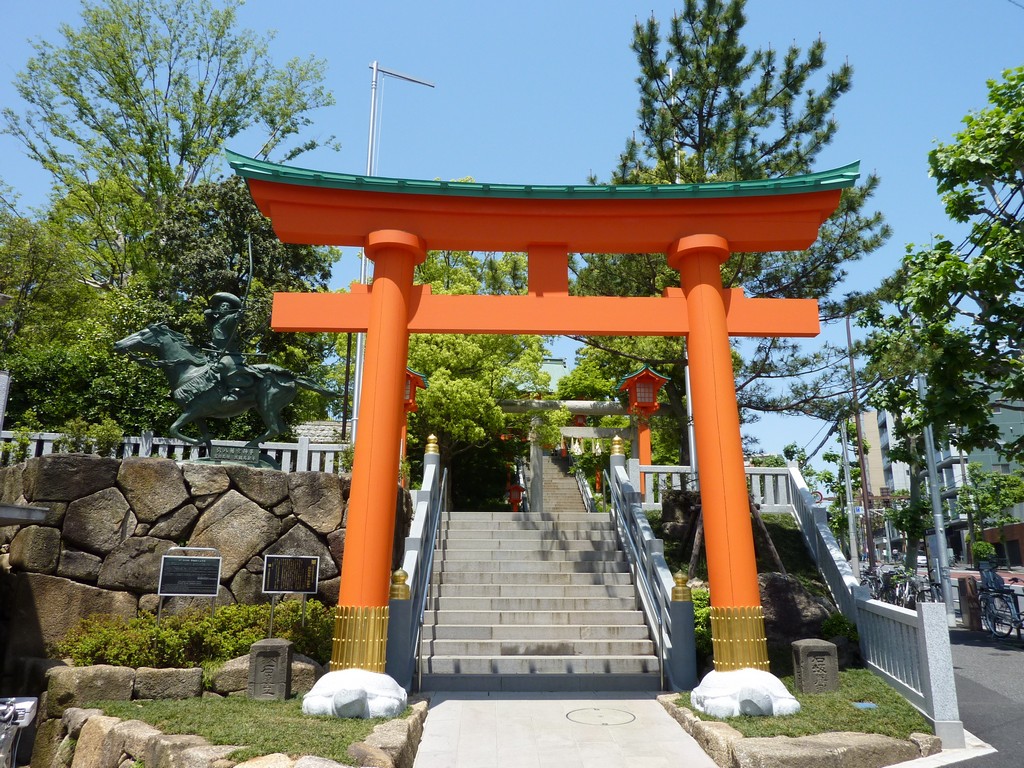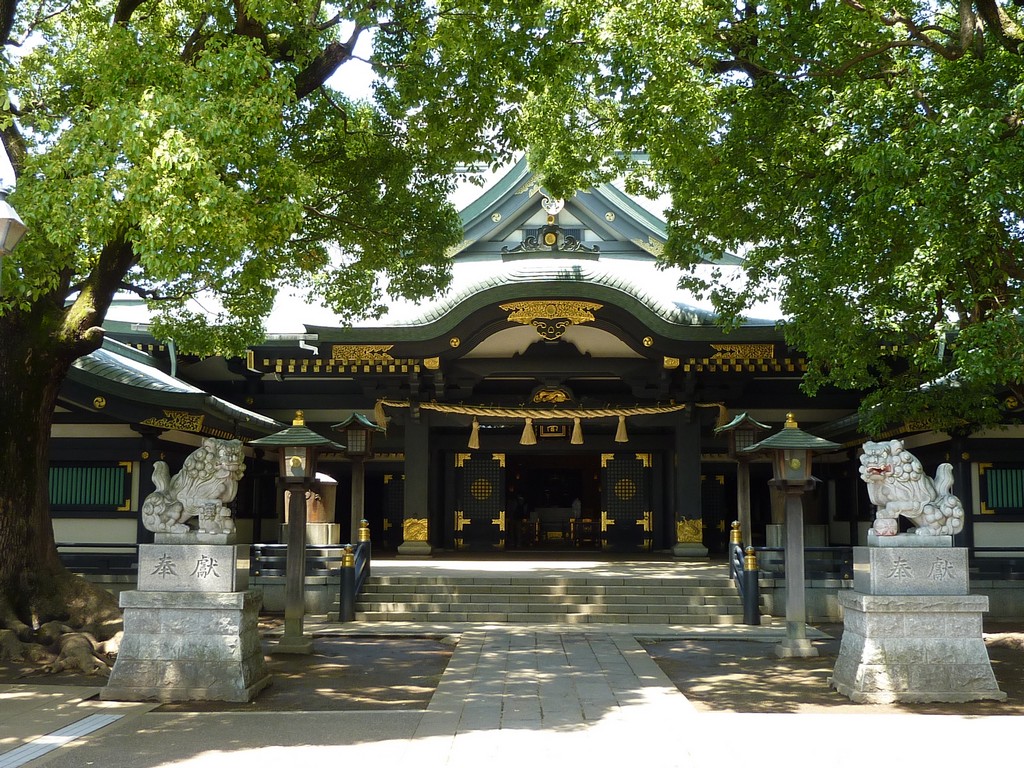Waseda
Part of the Shinjuku Ward, Waseda is a student neighbourhood between Kagurazaka and Takadanobaba. Everything there revolves around its university, one of Tokyo's top three tertiary institutions, along with Tokyo University and Keio University.
The main tourist attraction, however, is the superb Ana Hachiman-gū Shrine (穴八幡宮), located between the university and Toyama Park, at the Babashitachō crossing (junction of Waseda Avenue and Suwa Street). Legend places its foundation in 1062, although documented evidence of the shrine only dates back to the early 17th century. Its Buddha image was donated by Tokugawa Iemitsu in 1649. It is an interesting example of fusion between Buddhist and Shintō beliefs. The shrine's main gate has a clear Buddhist influence in its architecture. Furthermore, the Hōjō-ji Temple (放生寺) of the Shingon school of Buddhism is located on the same grounds. The shrine was recently renovated with lavish red lanterns and torii gates. Built on a wooded hill, it offers a bit peace and relaxation in the middle of the urban jungle of Shinjuku.


Waseda University 早稲田大学
Founded in 1882 by the renowned statesman Okuma Shigenobu as the "Tokyo Senmon Gakko", the University of Waseda is one of Japan's oldest and most prestigious. It is known for its liberal climate symbolized by the motto "independence of learning" (学問の独立, "gakumon no dokuritsu").
The Tokyo Senmon Gakko originally taught political science, economics, law, physics and English language. New depatrments opened over the years : literature (1890), education (1903), commerce (1904) and science and engineering (1908). Officially recognised as a university in 1902, the institution adopted the name of Waseda University.
Notable alumni include six post-war prime ministers (Ishibashi, Takeshita, Kaifu, Obuchi, Mori, and Fukuda), numerous prominent academics, corporate leaders, authors, athletes and actors. Currently, seven of the Fortune Global 2007's CEOs are Waseda graduates. The founder of Samsung, Lotte, Sony, Taito Corporation, Seibu Railway, as well as the (ex) CEO or chairman of Mitsubishi, Honda, Toshiba, Nintendo, Sega, Ricoh, and Uniqlo, all went to Waseda (more extensive list on Wikipedia).



Takadanobaba
This neighbourhood of the Shinjuku Ward is mostly known for its station, connecting the Tokyo Metro (Tozai line) to the JR Yamanote line and Seibu Shinjuku line (with trains bound for Kawagoe). Takadanobaba has a sizeable student community from nearby Waseda University and Gakushuin University. It is a lively area with lots of relatively cheap shops, restaurants (especially izakaya and ramen-ya) and bars.
The area was historically known as Totsuka (戸塚) until shogun Tokugawa Iemitsu established a ground for horseback riding and horse racing, known in Japanese as "baba" (馬場, literally "horse place"). The name Takata was added, after the mother of Matsudaira Tadateru, Iemitsu's uncle, who graced the area with her presence frequently. The change from "t" to "d" in "Takatanobaba" is a recent corruption.
In 1694, the battle of Takatanobaba featured Nakayama Yasubei (later Horibe Yasubei), one of the forty-seven rōnin.
Astro Boy, the famous manga/anime character created by Osamu Tezuka in 1952, was supposedly "born" in Takadanobaba on 7th April 2003. Two large murals depicting the little boy robot can be seen across the street of JR Takadanobaba station.
Surrounding Areas :